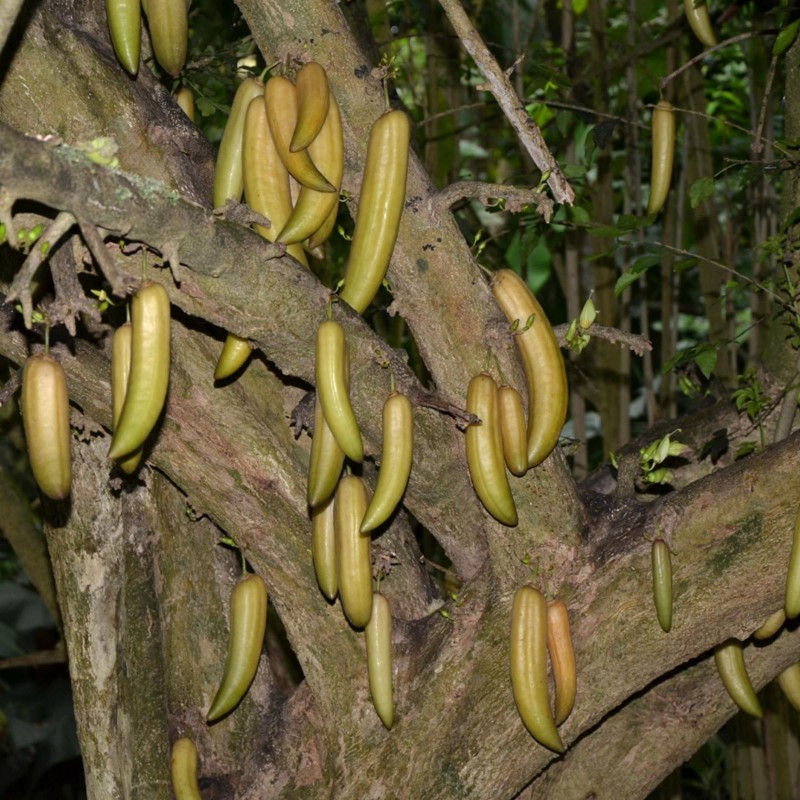







Oroxylum indicum is a species of flowering plant belonging to the monotypic genus Oroxylum and the family Bignoniaceae, are commonly called midnight horror, oroxylum, Indian trumpet flower, broken bones, Indian
Oroxylum indicum is a species of flowering plant belonging to the monotypic genus Oroxylum and the family Bignoniaceae, are commonly called midnight horror, oroxylum, Indian trumpet flower, broken bones, Indian caper, or tree of Damocles. It can reach a height of 18 metres (59 ft). Various segments of the tree are used in traditional medicine.
The large leaf stalks wither and fall off the tree and collect near the base of the trunk, appearing to look like a pile of broken limb bones. The pinnate leaves are approximately 1 metre (3.3 ft) in length and comparably wide,[5][7] borne on petioles or stalks up to 2 metres (6.6 ft) in length, making this the largest of all dicot tree leaves, which are quadripinnate (leaflets display four orders of branching).
The tree is a night-bloomer and flowers are adapted to natural pollination by bats. They form enormous seed pods – the fruits – are up to 1.5 metres (4.9 ft) long that hang down from bare branches, resembling swords. The long fruits curve downward and resemble the wings of a large bird or dangling sickles or swords in the night, giving the name "tree of Damocles". The seeds are round with papery wings.
Distribution
It is visible in the forest biome of Manas National Park in Assam, India. It is found, raised and planted in large number in the forest areas of the Banswara district in the state of Rajasthan in India. It is reported in the list of rare, endangered and threatened plants of Kerala (South India). It is also found in Sri Lanka.
Phytochemistry
Various segments of O. indicum, including leaves, root bark, heartwood, and seeds, contain diverse phytochemicals, such as prunetin, sitosterol, oroxindin, oroxylin-A, biochanin-A, ellagic acid, tetuin, anthraquinone, and emodin. Several of the compounds are under preliminary research to identify their potential biological properties.
Uses
The tree is often grown as an ornamental plant for its strange appearance. Materials used include the wood, tannins and dyestuffs.
In marriage rituals
The plant is used by the Kirat, Sunuwar, Rai, Limbu, Yakha in Nepal, the Thai in Thailand and the Lao in Laos.
In the Himalayas, people hang sculptures or garlands made from O. indicum (Skr. shyonaka) seeds from the roof of their homes in belief they provide protection.
As food
It is a plant with edible leaves and stems. The large young pods, known as Lin mai or Lin fa in Loei, are eaten especially in Thailand and Laos. They are first grilled over charcoal fire and then the bitter inner pulp is usually scraped and eaten along with lap.
In traditional medicines